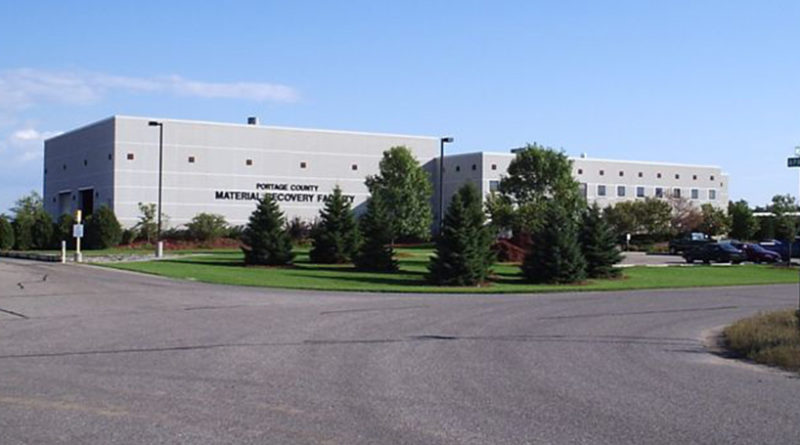Column: A history of the Portage Co. landfill
By Amanda Haffele
Did you know Portage County has a closed landfill?
It all began in the early 1970s when municipalities and the county wanted to pool resources, close dumps, and stop the burning of trash. A feasibility study found the towns of Buena Vista and Stockton to have the most suitable lands and geography to host a landfill.
After some time, lots of studies, meetings, and debate, it was determined that Stockton would be the best location to host a landfill. This was due to its proximity to the population center with easy road access for larger vehicles.
Fast forward to 1980, and a final feasibility study was performed to find the exact spot within the Town of Stockton that would host the landfill. This 84-page report, with 169 pages of appendices, takes into account surface water, private and public wells, groundwater flow and depth, soil types and percolation rates, bedrock, neighbors, past and present land use, and other geological features, zoning, financial responsibility, and transportation aspects.
With the feasibility report, the county was ready to go to the Wisconsin Department of Natural Resources to ask for approval to build a sanitary landfill on an 80-acre parcel. In 1981, the county started construction of a sanitary landfill rather than a dump.
Believe it or not, there is a difference between the two. A dump is, basically, an open hole in the ground where trash was buried or burned and where animals often swarm. Typically, dumps were not regulated nor did they have any environmental protection. A sanitary landfill, however, is a well-engineered and maintained structure, serving multiple purposes.
Construction
While the hole is being dug, surveyors (either on the ground or above using drones) will take measurements of the slope of each side wall to make sure they are at the exact grade needed. The bottom of the landfill is then layered in order of compacted clay, HDPE (#2 plastic) geomembrane liner, fabric, then drainage rock.
Pipes are placed within the drainage rock to collect leachate. Leachate is a liquid generated when water or other liquids seep down through the trash. It must be collected, tested, and treated at a water treatment facility or it can be recirculated back into the trash to increase decomposition. After garbage is placed in the landfill, more piping is installed to collect gasses which are produced as the garbage decomposes.
Fences and natural barriers such as coniferous trees surround landfills. Not only do they catch windblown litter, but they also limit access. Natural barriers also help to reduce noise as well as provide an aesthetic view versus an open cell being filled with garbage.
Site operation
The Portage County landfill is divided into three main sections called cells. Our industry has cleverly named the cell that is being filled the “active cell.” Large movable fences are set up around the active cell to reduce litter. After each load of garbage is dropped off, a large machine will drive over the top to help compact it.
At the end of each working day, the landfill operator must cover the garbage with at least six inches of topsoil known as daily cover. Shingles, shredded car fluff, foundry sand, or broken glass may also be used as daily cover. Daily cover reduces landfill odor, prevents litter, and deters wildlife.
The most prevalent wildlife around an active landfill is birds like gulls and vultures. Therefore, landfills cannot be placed within a 2-mile radius of an airport.
Once a cell reaches capacity, it must be capped and monitored. Capped cells must meet the slope requirements, and be covered with compacted clay, HDPE geomembrane liner, rooting zone soil, topsoil, and native grasses to limit erosion.
Closed landfills
Prior to opening in 1982, the county had to prove to WisDNR that it could finically support the closure of a landfill. The county had to set aside and invest money before the landfill could open. Therefore, all post-closure activities are already “paid for” through this investment account.
The Portage County landfill was officially closed in January 2009. Once a landfill is completely closed it must be monitored for 40 years to make sure it is stable, not leaking, or causing any issues. Trained County employees monitor the landfill’s gas, leachate levels, and groundwater via onsite wells and private offsite wells. We also do visual monitoring to make sure nothing compromises the integrity of the cap or the gas pipes. Examples of compromises include animal holes or dens, any sagging or unnatural low areas, bare spots, and woody vegetation growth.
Some closed landfills are turned into recreation areas such as soccer fields (as done in the city of Wausau), baseball fields, or dog runs, some even house solar fields. While others, like ours, are left as a home for wildlife (such as turkeys that cling to their nests and jumped off last second, scaring you half to death, when you walk by to water sample).
If you’ve never been to a landfill, I highly recommend taking a tour of the Marathon Co. landfill, located in Ringle, or Waste Management’s Cranberry Creek Landfill in Wisconsin Rapids. You’ll walk away with a whole new appreciation for trash disposal.
Amanda Haffele is the Portage County Solid Waste Director and she works at the Material Recovery Facility, 600 Moore Rd., in the Plover Industrial Park. It can be reached at 715.346.1931 or www.co.portage.wi.us/department/solidwaste.


